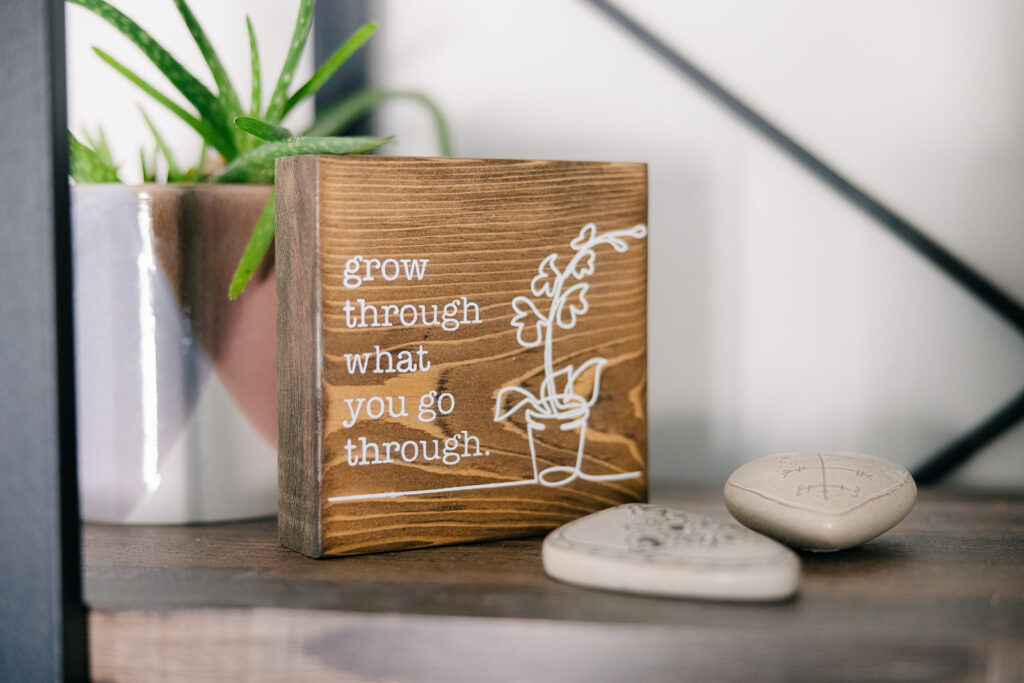Emotional eating patterns often grow out of trying to please other people. When you are always trying to make others happy, you may lose touch with what you really feel. That can make food feel like a safe friend. You may eat to calm, to comfort, or to fill a space inside that feels empty.
You are not broken. You just learned a way to survive. People-pleasing may feel normal, but it costs emotionally. In this blog, you will learn how people-pleasing leads to emotional eating. You will see how giving in to perfectionism and control can make food feel powerful. You will also learn gentle ways to set boundaries, find validation inside yourself, and care for your feelings in new ways.
Hi, I’m Meredith MacKenzie, a binge eating therapist and intuitive eating coach. If people-pleasing and perfectionism have you turning to food for comfort, there’s nothing wrong with you. Your emotional eating patterns make sense. Through my One Body To Love program, I help women heal these patterns with compassion and reconnect with their bodies. For more support, come join me on Instagram.

The Emotional Cost of People-Pleasing
People-pleasing may seem like kindness, but it often comes with a hidden cost. When you always say yes, even when you’re tired or overwhelmed, you slowly lose touch with your own needs. You might smile on the outside while feeling frustrated or sad on the inside.
Over time, this builds up. You may feel resentful, drained, or even invisible. And when you’re used to putting others first, it can feel hard to say what you really want or need. That’s when food can step in as a quick way to feel better.
Many people who struggle with emotional eating patterns also feel a deep need to be liked or accepted. You might eat to soften the stress of always being “on,” or to reward yourself after giving so much to others. You might not even notice you’re doing it. It can feel automatic, like your body is trying to give you something that no one else is offering: comfort, care, or just a break.
But people-pleasing doesn’t just leave you tired. It disconnects you from yourself. And that disconnection is one of the biggest drivers behind emotional eating.
Struggling with emotional eating? This video shares simple steps to break the cycle, ease stress eating, and start finding peace with food.
How People-Pleasing Fuels Emotional Eating Patterns and Food Disconnection
When you’re focused on others all the time, it becomes harder to stay connected to your own body. Here are some common ways people-pleasing creates food disconnection and feeds emotional eating patterns:
- Ignoring hunger cues
You’re so busy caring for others or meeting expectations that you skip meals or forget to eat. Later, you feel ravenous, which can lead to overeating or bingeing. - Eating in secret
You don’t want to upset anyone or feel judged, so you hide your eating. This secrecy can create guilt and shame, which only make emotional eating worse. - Using food as your only form of self-care
When your day is spent giving, food might feel like the only thing that’s just for you. It becomes a reward or comfort, especially when no other support is in place. - Saying yes to food you don’t want
You may eat to avoid hurting someone’s feelings, like accepting food you don’t want or need. This can leave you feeling out of control or disconnected from what your body actually wants. - Pushing down your feelings
When you can’t express anger, sadness, or stress openly, those feelings may come out through food. Eating becomes a way to cope when you feel like you can’t speak your truth.
These patterns are not signs of failure. They are signs of deep care, survival, and unmet needs. The good news is that reconnection is possible.
The Connection Between Control, Perfectionism, and Food
People-pleasing often leads to perfectionism. You try to do everything right, keep everyone happy, and avoid mistakes. When life feels overwhelming, food can become one of the few things you try to control.
You might eat “perfectly” all day, then binge at night. Or follow strict food rules to feel safe. But these patterns aren’t really about food. They’re about trying to feel good enough.
Perfectionism says, “If I just try harder, I’ll finally feel okay.” But instead, it leads to shame when you can’t keep up. And that shame feeds emotional eating patterns.
Healing doesn’t come from more control. It comes from care, softness, and letting go of the need to be perfect.
Why Boundaries Help Heal Food Struggles
Setting boundaries can feel hard, especially if you’re used to putting others first. But strong boundaries help protect your energy, emotions, and eating habits. Here’s how:
- When you say no to things that drain you, you have more space to care for yourself, your time and your energy. Less stress often means fewer emotional eating triggers.
- Boundaries help you listen and reconnect you to what you want, not just what others expect. This makes it easier to notice when you’re hungry, full, or using food to cope.
- Saying yes when you mean no builds frustration and resentment. That built-up emotion often shows up as overeating or mindless snacking.
- When you speak your truth and honor your limits, your body starts to feel safer. You don’t need food to numb or manage uncomfortable emotions as often.
- When you set boundaries, it teaches others how to treat you and that your needs matter. This can lead to healthier relationships and less emotional pressure.
Boundaries aren’t walls. They’re bridges that help you come back to yourself.
If food has been your go-to comfort, shifting that can feel like a real loss. This blog explores why that grief is valid, and how to move through it.

Building Self-Compassion and Internal Validation
Many people who struggle with emotional eating patterns are hard on themselves. You may feel like nothing you do is ever enough. You might wait for praise from others to feel good about yourself, while ignoring your own voice inside.
This can keep you in a cycle of giving, pleasing, and eating to cope. But the truth is, you don’t have to earn rest, food, or care. You deserve those things simply because you are human.
Self-compassion is the practice of speaking to yourself with the same kindness you offer others. It means saying, “I’m doing the best I can,” even on hard days. It means noticing your pain without trying to fix it with food or shame.
Internal validation means learning to trust yourself. Instead of looking outside for approval, you begin to ask, “What do I need? What feels right for me?”
This is not always easy. But it is powerful. When you begin to meet your own needs with care, the urge to eat in response to emotions often softens. Food becomes just food again, not a way to prove your worth or push down your pain.
Gentle Practices to Interrupt Emotional Eating Patterns
Shifting emotional eating patterns takes time, not force. You don’t need to overhaul your life overnight. Small, kind steps can make a big difference. Here are a few gentle practices to begin with:
Pause before you eat and ask, “What am I feeling right now?” This helps build awareness without judgment. You might still eat, but now you’re connecting with yourself, not just numbing out.
Practice saying no in small ways. Even something like choosing where to order takeout can be a step toward honoring your needs.
Check in with your body during the day. Ask yourself, “Am I hungry? Am I thirsty? Am I tired? Am I overwhelmed?” These check-ins help rebuild trust with your body.
Celebrate moments when you show yourself kindness. Maybe you took a deep breath instead of rushing. Maybe you let yourself rest. These moments matter.
Lastly, remind yourself that you’re allowed to have needs. You don’t have to earn rest or care. You don’t have to be perfect. Healing begins when you treat yourself with the same care you offer everyone else.
Not sure if you’re actually hungry or just bored? You’re not alone. In this video, we’ll explore how to spot the difference and break the boredom eating cycle.
Healing Emotional Eating Patterns with Care and Boundaries
Emotional eating patterns are not a sign of weakness. They are often a response to years of giving too much, holding too much, and not feeling safe enough to just be yourself. People-pleasing, perfectionism, and the fear of letting others down can all leave you disconnected from your own needs.
If emotional eating feels tied to people-pleasing, perfectionism, or never putting yourself first, you’re not alone. These patterns make sense, and they can be healed with care, not control.
In my group program, One Body To Love, and in 1:1 coaching, I help women break free from the binge-restrict cycle, set boundaries, and rebuild trust with food and themselves.
Not sure where to start? Book a free discovery call. Or explore the One Body To Love podcast and my YouTube channel for real, supportive conversations.
